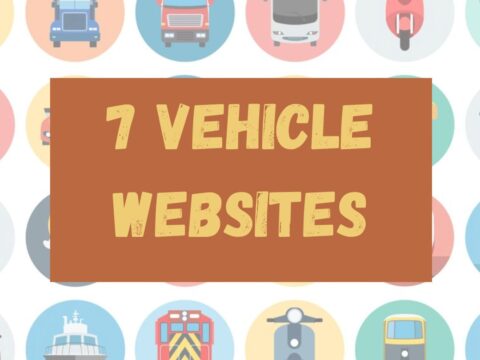 When students graduate from high school, a majority enter the working world where they are expected to balance budgets, pay bills, and submit rent and car payments on time. All of these expenses must be paid from whatever money they get from the job(s) they find after graduation. The world expects them to pay these critical bills before eating out, buying clothes, or entertaining themselves.
When students graduate from high school, a majority enter the working world where they are expected to balance budgets, pay bills, and submit rent and car payments on time. All of these expenses must be paid from whatever money they get from the job(s) they find after graduation. The world expects them to pay these critical bills before eating out, buying clothes, or entertaining themselves.
That’s not as easy as it sounds. Most new jobholders never had to think about costs vs. revenue, instead relied on parents to keep a roof over their head, heat and AC turned on, and gas in the car (and a car in the driveway). Needless to say, paying these essential bills may be daunting, even confusing.
The good news is: Half of the nation’s schools require a financial literacy course. The bad news is it’s not mandatory.
Last year, I published a list of eight great financial literacy sites for grades 3-12. Now, just in time for April’s Financial Literacy Month, the business world has released an impressive list of additional resources to help teens see through the murkiness of financial independence. During April, give students at least a few hours to visit one or more of these excellent sites:
Admongo
Age group: Middle school
Through this interactive video game, students learn to identify advertising and understand its messages with the goal of becoming informed, discerning consumers. To win the game, they will have to answer questions like, “Who is responsible for the ad?”, “What is the ad actually saying?”, and “What does the ad want me to do?” For educators and parents, Admongo includes tools like videos, lesson plans, printed materials, downloads, and alignment with state standards.
Admongo is put out by the Federal Trade Commission who also offers another well-received game, “Spam Scam Slam” about spam.
Coffeeshop Game
Age group: Middle School
Players set up a coffee shop and make as much money as they can in fourteen days. To succeed they must wisely buy ingredients, choose a popular recipe, and set an agreeable price. When that’s done, the doors are open for business and players see if they made good decisions. The site includes Common Core Math Standards addressed with play.
Younger kids can select related games running businesses like a Lemonade Stand, a hotel, a shopping mall, and more.
How the Stock Market Works

Age group: High school
With this free real-time streaming stock market game, students set up accounts or join an existing group. They invest virtual cash, research their strategy with over a hundred videos and tutorials, and compete against classmates and the world to see how successful they would be if they were using their money.
There are lots of online stock market games (I included a different one last year). This one is used by 10,000 schools each year and 350,000 individuals. It also includes a teacher’s guide, a series of lesson plans, and the Common Core standards addressed.
Living Wage Calculator
Age group: Upper elementary, middle and high school
Put out by MIT, Living Wage Calculator estimates the cost of living in your community or region. The calculator lists typical expenses, cost of living, and typical wages. Students start by selecting their state, county, or metropolitan area, and then evaluate costs vs. expenses in that area. Older students can also read articles on living wages through the United States.
iOS Apps
Because more often than not, 18-24 year olds are on a mobile device rather than a computer, here are six apps that can be played from anywhere:
- Adventure Capitalist — With the free app, students hire employees, purchase cutting-edge upgrades, dominate the market, and attract investors to boost profits.
- Bankaroo – Using this free virtual bank for kids, students learn to manage their allowance while saving for goals. To track learning, they earn badges for their accomplishments. This app works on desktops as well as mobile devices.
- Motion Math – As students struggle to run their own pizzeria, they must balance budgets, think proportionally, buy ingredients, design the pizzas, and sell to customers. The app also includes which Common Core Math Standards are addressed by the gameplay.
- Savings Spree — Students learn how the choices they make each day can add up to big savings or expenses depending on their spending decisions. Kids see how they can save for short-term goals while investing for future needs.
- Time is Money – This free Chrome add-on converts prices on a webpage to hours worked.
The importance of financial literacy can’t be overstated. Rather than introduce one game from this collection during a class unit on personal economics, have students play throughout the school year, reinforcing prior learning, scaffolding knowledge, and self-reporting their progress. Set one game aside to play at the end of the year as a summative assessment. Not only will students appreciate their financial literacy, so will their parents.
Jacqui Murray has been teaching K-18 technology for 30 years. She is the editor/author of over a hundred tech ed resources including a K-12 technology curriculum, K-8 keyboard curriculum, K-8 Digital Citizenship curriculum. She is an adjunct professor in tech ed, Master Teacher, webmaster for four blogs, an Amazon Vine Voice, CSTA presentation reviewer, freelance journalist on tech ed topics, contributor to NEA Today, and author of the tech thrillers, To Hunt a Sub and Twenty-four Days. You can find her resources at Structured Learning.



































